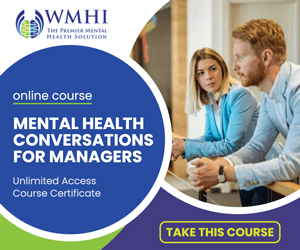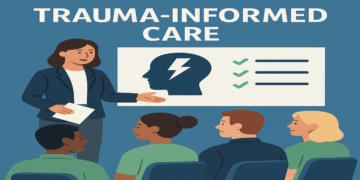Examining the Complex Debate Over Student Well-Being, Digital Distractions, and Effective Policy Solutions
The Perfect Storm Affecting Student Mental Health
The United States is facing an unprecedented youth mental health crisis. Recent data from the Centers for Disease Control and Prevention (CDC) reveals that 57% of high school girls and 29% of high school boys reported persistent feelings of sadness or hopelessness in 2021 – nearly double the rates from a decade ago. Simultaneously, emergency room visits for suicide attempts among adolescents have surged, while academic performance continues to decline nationwide.
This alarming trend has forced educators, policymakers, and mental health professionals to implement two major interventions:
1. Expanded school-based mental health programs
2. Widespread bans on smartphones in classrooms
But are these solutions addressing the root causes of student distress? This comprehensive 2,500-word analysis examines:
– The science behind the youth mental health crisis
– Current school mental health initiatives and their effectiveness
– The heated national debate over phone bans
– Alternative solutions and expert recommendations
For parents and educators seeking mental health resources, visit The Good Mental for evidence-based guidance.)
1. Understanding the Youth Mental Health Epidemic
America’s youth are in distress. Behind the glowing screens of smartphones and the pressure-cooker environment of modern schools, a silent epidemic is raging—one marked by soaring rates of anxiety, depression, and suicidal ideation among children and teens. The numbers paint a grim picture:
1.1 The Statistical Reality
Recent studies paint a disturbing picture:
– Emergency room visits for suspected suicide attempts rose 51% for adolescent girls from 2019-2021
– 42% of high school students reported persistent feelings of sadness (CDC Youth Risk Survey 2023)
– 1 in 5 college students seriously considered suicide in 2022 (American College Health Association)
1.2 The Contributing Factors
Experts identify multiple interconnected causes:
A. The Social Media Factor
– Teens spending 4.8 hours daily on social media (Gallup 2023)
– Instagram usage correlates with body image issues, especially in girls
– TikTok’s algorithm promotes self-harm content to vulnerable youth (Wall Street Journal investigation)
B. Academic Pressure
– 75% of high schoolers report school as a significant stressor (APA)
– 50% reduction in unstructured play time since the 1980s
C. Pandemic Aftermath
– Social skill deficits from isolation periods
– Learning loss anxiety exacerbating stress
2. School Mental Health Programs: The Evolving Landscape of Student Support
As youth mental health needs reach crisis levels, schools have become the front line of defense — transforming from purely academic institutions into vital hubs for emotional and psychological support. Across the U.S., innovative programs are emerging to address this urgent need, but significant gaps remain in access, quality, and effectiveness.
2.1 Types of Programs Being Implemented
A. Counseling Services Expansion
– Federal funding through the Bipartisan Safer Communities Act
– Teletherapy partnerships with companies like Hazel Health
– “Wellness Centers” replacing traditional nurse’s offices
B. Social-Emotional Learning (SEL) Integration
– CASEL framework adoption in 27 states
– Daily mindfulness exercises becoming common
C. Crisis Intervention Systems
– Anonymous tip lines like Safe2Tell
– QR code reporting systems in school bathrooms
2.2 Effectiveness and Challenges
Success Stories:
– Chicago Public Schools saw 35% reduction in disciplinary incidents after SEL implementation
– Trauma-Informed Programs schools report improved attendance
Ongoing Challenges:
– Stigma preventing help-seeking
– Chronic understaffing (average 1:1200 counselor-student ratio)
– Parental opposition to mental health education
Discover Effective Mental Health Strategies from leading experts.
3: The Great Phone Ban Debate: Balancing Learning and Digital Wellbeing
The classroom battleground of our era isn’t about textbooks or teaching methods—it’s about the 6-inch screens in students’ pockets. As smartphones become ever-present in young lives, schools across America are wrestling with a fundamental question: Should we ban phones to protect learning and mental health, or does that approach miss bigger issues?
Why This Debate Matters Now
- U.S. teens average 4.8 hours daily on social media (Gallup 2024)
- 72% of teachers say phones significantly disrupt learning (Pew Research)
- 15 states have proposed or passed classroom phone restrictions in 2024 alone
3.1 The Current Policy Landscape
States Taking Action:
– Florida’s comprehensive classroom ban (2023) – Florida House Bill 949.
– Indiana’s pilot program showing academic gains – Senate Enrolled Act 185.
– California’s the Phone-Free School Act – Assembly Bill 3216
School-Level Policies:
– Yondr pouches for phone storage
– Designated phone zones
– Tiered consequence systems
3.2 Evidence For and Against Bans
Pro-Ban Research:
– London School of Economics study: Bans improved test scores by 6.4%
– University of Chicago findings: Reduced cyberbullying incidents
Anti-Ban Arguments:
– ACLU concerns about emergency communication
– Equity issues for students needing translation apps
– Questionable long-term mental health impact
3.3 Student and Teacher Perspectives
– 72% of teachers say cellphone distraction is a major problem in the classroom (Pew Research)
– Mixed student reactions in school surveys
4: Beyond Bans and Counseling: Rethinking Student Wellbeing Holistically
The limitations of current approaches to youth mental health are becoming impossible to ignore. While phone bans may reduce classroom distractions and counseling programs address acute needs, neither tackles the root causes of today’s student mental health crisis. The truth is: we’re treating symptoms while the system itself remains broken.
Why Piecemeal Solutions Fall Short
- Only 20% of students with anxiety disorders receive school-based care (JAMA Psychiatry)
- Phone bans don’t address after-hours social media use – where most harm occurs
- 57% of teens say “no one talks to us about how to actually cope” (Harvard Youth Poll)
4.1 Policy Recommendations
– Later school start times aligned with sleep research
– Social media age verification laws
– Increased recess and PE requirements
4.2 Family and Community Roles
– Parent education programs on digital literacy
– Community mental health partnerships
4.3 The Future of Student Wellbeing
– AI-assisted mental health screening (apps like MindLift)
– Gamified emotional learning apps (you can find some apps here)
– Architectural designs promoting calm (read more here)
A Multifaceted Approach for Meaningful Change
The youth mental health crisis cannot be solved with isolated interventions—it demands a complete reimagining of how we support young people. Phone bans and counseling programs are important tools, but they are only the beginning. True progress requires:
Three Pillars for Sustainable Change
-
Systemic Reform
-
Later school start times aligned with adolescent biology
-
Curriculum redesign that values wellbeing as much as test scores
-
Policy changes holding tech companies accountable
-
-
Community-Wide Solutions
-
Mental health education for parents and teachers
-
Public spaces designed for connection, not just consumption
-
Healthcare systems that bridge the school-clinic divide
-
-
Youth-Centered Innovation
-
Technology that empowers rather than exploits
-
Peer support networks with professional oversight
-
Skills training for emotional resilience, not just academic success
-
“The environments we create for children are far more powerful than any intervention we might design later.”
— Dr. Kenneth Ginsburg, adolescent medicine specialist
Call to Action
-
For Educators: Audit your school’s climate through a mental health lens
-
For Parents: Advocate for community solutions beyond school walls
-
For Policymakers: Fund prevention as aggressively as treatment
-
For Students: Your voice matters—demand systems that serve your needs









